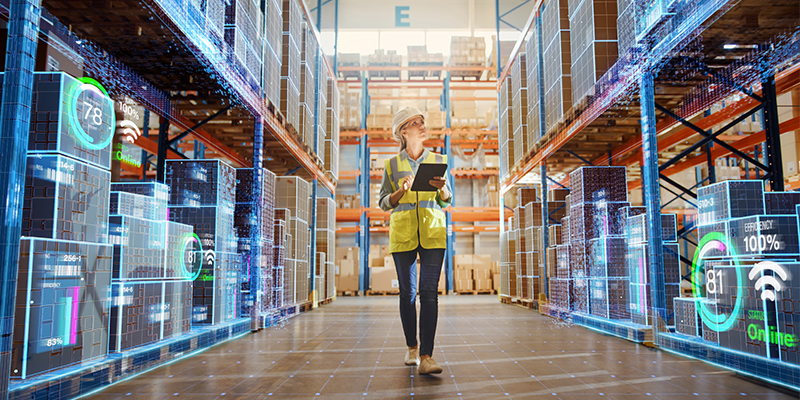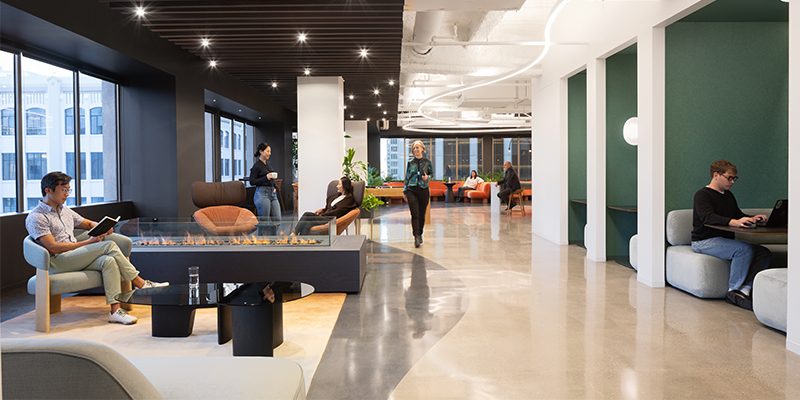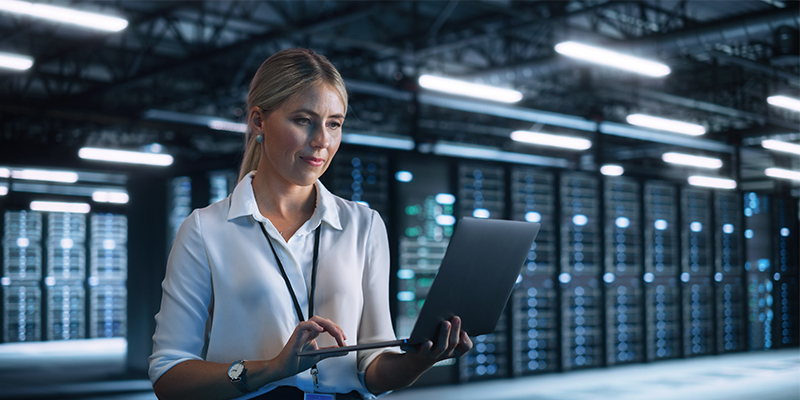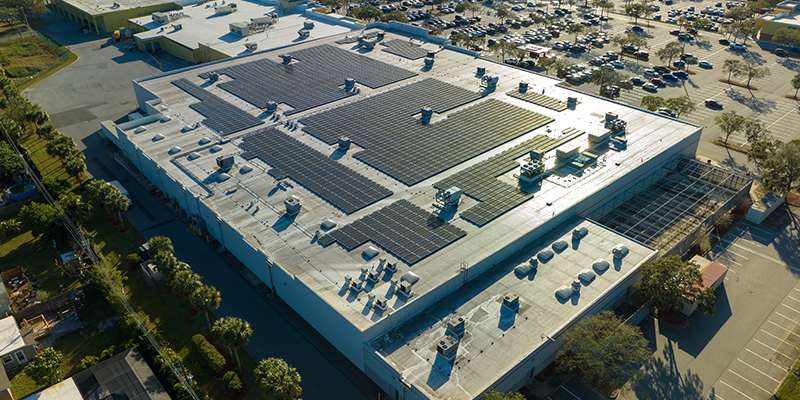By Kathryn Hamilton, CAE
Artificial intelligence (AI) has captured the world’s imagination. It’s everywhere in the headlines, powering everything from your morning weather forecast to your Amazon recommendations. But while it’s ubiquitous today, AI’s roots trace back nearly 70 years to a 1956 summer research project at Dartmouth University. What’s different now is the scale and sophistication of AI’s capabilities – particularly with the rise of large language models (LLMs) and generative AI, systems that don’t just analyze information but generate text, images and insights from vast amounts of data.
Steve Weikal, industry chair, real estate transformation lab, MIT Center for Real Estate, and managing partner, MET Fund II, led I.CON Central attendees through an AI-driven world of robotics, automation and advanced technologies. Weikel is co-author of the recently published NAIOP Research Foundation report “From Static to Strategic: AI’s Role in Next-Generation Industrial Real Estate.”
In warehouses – where speed, precision and cost control reign supreme – AI is becoming a transformative force. From how goods are moved to how labor is managed, the technology is re-engineering logistics in real time.
Labor Impact: Augmentation, Not Replacement
AI has reignited an age-old question – will machines take our jobs? Research from MIT and Goldman Sachs suggests the answer is more nuanced. While automation could affect as many as 300 million roles globally, most experts believe AI will augment rather than replace human labor, lifting productivity across skill levels.
In warehouse operations, this translates into a shift from manual, repetitive tasks to higher-value analytical and technical roles. Machines will handle precision picking, scanning and routing; humans will focus on oversight, problem-solving and process optimization.
The distinction is critical. AI doesn’t “think” – it recognizes patterns. Humans still bring intuition, imagination, emotion and common sense – all qualities that remain vital in fast-changing logistics environments.
As AI moves complexity to the background, simplicity rises to the foreground. Instead of navigating drop-down menus or dashboards, workers will increasingly describe what they want and the system will deliver it. Those who can clearly articulate problems will get the best results.
Tools in the Marketplace Today
AI’s reach spans every stage of the warehouse and supply chain lifecycle – from site selection to operations management.
- Site and design optimization: Tools like TestFit and Augmenta use AI to run rapid design iterations, analyzing layouts, zoning and performance metrics in seconds.
- Permitting and compliance: Platforms such as PermitFlow and UpCodes digitize building codes and track permit applications across thousands of jurisdictions. Natural language processing enables these systems to scan complex zoning PDFs and alert developers to regulatory changes instantly.
- Operations and monitoring: Once buildings are live, spatial AI and digital twin software like Clarreo and Synchro create dynamic 3D models of facilities. Drones or handheld LiDAR devices feed real-time data into these models, giving managers visibility into inventory, maintenance and performance without ever leaving their desk.
Automation Systems: Smarter, Faster, More Precise
Warehouse automation is nothing new, but AI has made it vastly more adaptive. Automated storage and retrieval systems (ASRS) like those from Brightpick or Ocado now rely on AI to anticipate orders, adjust routing, and optimize bin placement in real time.
Amazon, a bellwether for the sector, expects that up to 75% of its fulfillment operations will be automated by 2033. Its network of high-volume, high-precision facilities represents the next generation of “hyper-smart” warehouses – spaces where systems communicate, self-correct and continuously improve through machine learning feedback loops.
Behind the scenes, AI is also optimizing energy and resource use. Smart grid integration and predictive maintenance systems reduce downtime and balance power demands, addressing one of the industry’s emerging challenges: energy consumption.
Robotics: From Static Machines to Dynamic Teammates
The number of warehouse robots worldwide is expected to triple by 2030, reaching roughly 1.5 million units. These are no longer the rigid, pre-programmed machines of decades past – they’re becoming dynamic collaborators.
- Autonomous Mobile Robots (AMRs) and Automated Guided Vehicles (AGVs) handle routine material transport, navigating complex environments with spatial reasoning that allows them to adapt on the fly.
- Mobile Sortation Robots, such as those developed by Addverb, move goods across grids for human workers to pick, bridging the gap between automation and labor.
- Cobots (collaborative robots) work safely alongside people, assisting with picking and scanning.
- Humanoids represent the next frontier – machines capable of walking, lifting and navigating human environments with startling finesse.
Key Takeaways: Warehouses as Strategic Infrastructure
AI is fundamentally redefining industrial real estate. Warehouses are evolving from static boxes into strategic infrastructure – adaptive, data-rich environments that communicate, self-optimize, and even predict future needs, and developers, owners and investors can stay ahead through the following:
- Integrate AI early: Incorporate AI tools during predevelopment. Retrofitting is possible but less efficient. Early integration ensures systems, sensors and data flows are aligned from day one.
- Prepare the workforce: The next generation of warehouse employees will work with AI, not compete against it. Training should emphasize analytical thinking, problem-solving and human-machine collaboration.
- Rethink metrics: Square footage will matter less than productivity per cubic foot or lines per hour. Smarter buildings could merit valuation premiums based on intelligence and output.
- Invest in power and data resilience: As robotics and AI systems proliferate, facilities must plan for higher power needs, on-site microgrids and robust data architectures.
- Expect convergence: The intersection of AI, robotics and quantum computing will create “smart industrial ecosystems.” SoftBank alone has committed $1 trillion to developing AI-driven industrial parks – an indicator of where the future is headed.
AI isn’t replacing warehouse workers – it’s redefining what warehouse work means. The best warehouses of tomorrow will be not just places of storage, but engines of insight – responsive, efficient and powered by intelligent collaboration between humans and machines.
From “point and click” to “describe and done,” the logistics industry stands at the threshold of a new era where AI transforms not just how warehouses operate, but how we think about industrial real estate itself.

This post is brought to you by JLL, the social media and conference blog sponsor of NAIOP’s I.CON Central 2025. Learn more about JLL at www.us.jll.com or www.jll.ca.








